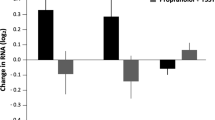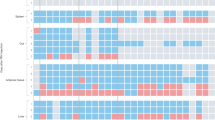Abstract
The ability to evaluate distress in laboratory animals is needed in order to ensure that husbandry and experimental procedures do not negatively impact animal welfare. Accurate measurement of acute stress and chronic stress, and distinguishing between stress that is harmful (distress) and stress that does no harm (eustress), can be challenging. Whereas corticosterone concentrations are commonly used to measure stress in laboratory animals, the neutrophil-lymphocyte ratio has been proposed as a potentially better indicator of chronic stress. Furthermore, an association between such measures of stress and concurrent behavioral indicators of negative welfare is required to determine their accuracy in evaluating distress. The authors compared serum corticosterone concentrations and neutrophil-lymphocyte ratios to assess acute or chronic stress in male Sprague Dawley rats. Elevated serum corticosterone concentrations, but not neutrophil-lymphocyte ratios, were associated with acute stress exposure, whereas elevated neutrophil-lymphocyte ratios, but not serum corticosterone concentrations, were associated with chronic stress exposure. Because the neutrophil-lymphocyte ratio differences corresponded with a behavioral indicator of distress in chronically stressed rats, it may serve as a valuable tool for the physiological assessment of distress in rats.
This is a preview of subscription content, access via your institution
Access options
Subscribe to this journal
We are sorry, but there is no personal subscription option available for your country.
Buy this article
- Purchase on Springer Link
- Instant access to full article PDF
Prices may be subject to local taxes which are calculated during checkout
Similar content being viewed by others
References
Poole, T. Happy animals make good science. Lab. Anim. 31, 116–124 (1997).
Lawler, M.M. in Comfortable Quarters for Laboratory Animals (eds. Reinhardt, V. & Reinhardt, A.) 26–32 (Animal Welfare Institute, Washington, DC, 2002).
Smith, A.L. & Corrow, D.J. Modifications to husbandry and housing conditions of laboratory rodents for improved well-being. ILAR J. 46, 140–147 (2005).
Veissier, I. & Boissy, A. Stress and welfare: two complementary concepts that are intrinsically related to the animal's point of view. Physiol. Behav. 92, 429–433 (2007).
Pekow, C. Defining, measuring, and interpreting stress in laboratory animals. Contemp. Top. Lab. Anim. 44, 41–45 (2005).
Broom, D.M. & Fraser, A.F. Domestic Animal Behaviour and Welfare 4th edn. 58–69 (CAB International, Wallingford, UK, 2010).
Sharp, J.L., Zammit, T.G., Azar, T.A. & Lawson, D.M. Stress-like responses to common procedures in male rats housed alone or with other rats. Contemp. Top. Lab. Anim. Sci. 41, 8–14 (2002).
Sharp, J., Azar, T. & Lawson, D. Does cage size affect heart rate and blood pressure of male rats at rest or after procedures that induce stress-like responses? Contemp. Top. Lab. Anim. Sci. 42, 8–12 (2003).
Bekkedal, M.Y., Rossi, J. 3rd & Panksepp, J. Fetal and neonatal exposure to trimethylolpropane phosphate alters rat social behavior and emotional responsivity. Neurotoxicol. Teratol. 21, 435–443 (1999).
Tzavara, E.T., Monory, K., Hanoune, J. & Nomikos, G.G. Nicotine withdrawal syndrome: behavioural distress and selective up-regulation of the cyclic AMP pathway in the amygdala. Eur. J. Neurosci. 16, 149–153 (2002).
Sienkiewicz-Jarosz, H. et al. The effects of central administration of physostigmine in two models of anxiety. Pharmacol. Biochem. Behav. 75, 491–496 (2003).
McCormick, C.M., Smith, C. & Mathews, I.Z. Effects of chronic social stress in adolescence on anxiety and neuroendocrine response to mild stress in male and female rats. Behav. Brain Res. 187, 228–238 (2008).
Rosenbaum, M.D., VandeWoude, S. & Johnson, T.E. Effects of cage-change frequency and bedding volume on mice and their microenvironment. J. Am. Assoc. Lab. Anim. Sci. 48, 763–773 (2009).
Costa, R., Tamascia, M.L., Nogueira, M.D., Casarini, D.E. & Marcondes, F.K. Handling of adolescent rats improves learning and memory and decreases anxiety. J. Am. Assoc. Lab. Anim. Sci. 51, 548–553 (2012).
Kalliokoski, O. et al. Mice do not habituate to metabolism cage housing—a three week study of male BALB/c mice. PloS ONE 8, e58460 (2013).
Seyle, H. Stress Without Distress (Lippincott Williams & Wilkins, Philadelphia, PA, 1974).
Greenberg, N., Carr, J.A. & Summers, C.H. Causes and consequences of stress. Integr. Comp. Biol. 42, 508–516 (2002).
Hahn, B.H., MacDermott, R.P., Jacobs, S.B., Pletscher, L.S. & Beale, M.G. Immunosuppressive effects of low doses of glucocorticoids: effects on autologous and allogeneic mixed leukocyte reactions. J. Immunol. 124, 2812–2817 (1980).
Cupps, T.R. & Fauci, A.S. Corticosteroid-mediated immunoregulation in man. Immunol. Rev. 65, 133–155 (1982).
Fingerle-Rowson, G. et al. Regulation of macrophage migration inhibitory factor expression by glucocorticoids in vivo. Am. J. Pathol. 162, 47–56 (2003).
Bauer, M.E. et al. Dexamethasone-induced effects on lymphocyte distribution and expression of adhesion molecules in treatment-resistant depression. Psychiatry Res. 113, 1–15 (2002).
Davis, A.K., Maney, D.L. & Maerz, J.C. The use of leukocyte profiles to measure stress in vertebrates: a review for ecologists. Funct. Ecol. 22, 760–772 (2008).
Reimers, J.I., Bjerre, U., Mandrup-Poulsen, T. & Nerup, J. Interleukin 1 beta induces diabetes and fever in normal rats by nitric oxide via induction of different nitric oxide synthases. Cytokine 6, 512–520 (1994).
Christensen, U.B. et al. Linomide increases plasma corticosterone in normal rats, but does not prevent the inhibitory action of IL-1 on beta-cells in vivo or ex vivo. Autoimmunity 23, 257–268 (1996).
Harris, J.G., Flower, R.J. & Perretti, M. Endogenous corticosteroids mediate the neutrophilia caused by platelet-activating factor in the mouse. Eur. J. Pharmacol. 283, 9–18 (1995).
Ellis, G.S. et al. G-CSF, but not corticosterone, mediates circulating neutrophilia induced by febrile-range hyperthermia. J. Appl. Physiol. 98, 1799–1804 (2005).
Kaufman, J. Diseases of the adrenal cortex of dogs and cats. Mod. Vet. Pract. 65, 513–516 (1984).
Kronfol, Z., Turner, R., Nasrallah, H. & Winokur, G. Leukocyte regulation in depression and schizophrenia. Psychiatry Res. 13, 13–18 (1984).
Kronfol, Z., Turner, R., House, J.D. & Winokur, G. Elevated blood neutrophil concentration in mania. J. Clin. Psychiatry 47, 63–65 (1986).
Darko, D.F., Rose, J., Gillin, J.C., Golshan, S. & Baird, S.M. Neutrophilia and lymphopenia in major mood disorders. Psychiatry Res. 25, 243–251 (1988).
Harding, E.J., Paul, E.S. & Mendl, M. Animal behaviour: cognitive bias and affective state. Nature 427, 312 (2004).
Burman, O.H.P., Parker, R., Paul, E.S. & Mendl, M. A spatial judgement task to determine background emotional state in laboratory rats, Rattus norvegicus. Anim. Behav. 76, 801–809 (2008).
Kiyokawa, Y., Takeuchi, Y. & Mori, Y. Two types of social buffering differentially mitigate conditioned fear responses. Eur. J. Neurosci. 26, 3606–3613 (2007).
Nakayasu, T. & Kato, K. Is full physical contact necessary for buffering effects of pair housing on social stress in rats? Behav. Processes 86, 230–235 (2011).
Kodama, Y., Kiyokawa, Y., Takeuchi, Y. & Mori, Y. Twelve hours is sufficient for social buffering of conditioned hyperthermia. Physiol. Behav. 102, 188–192 (2011).
Kermani, H.R., Hoboubati, H., Esmaeili-Mahani, S. & Asadi-Shekaari, M. Induction of intervertebral disc cell apoptosis and degeneration by chronic unpredictable stress. J. Neurosurg. Spine (published online 7 March 2014; doi:10.3171/2014.1.SPINE13466).
Alterman, A. et al. Functional and proteomic analysis of submandibular saliva in rats exposed to chronic stress by immobilization or constant light. Arch. Oral Biol. 57, 663–669 (2012).
Ewa, B.S., Beata, L., Ilona, K., Dariusz, S´. & Janusz, M. Brain derived neurotrophic factor (BDNF) containing neurons in the hypothalamic paraventricular and supraoptic nuclei of juvenile and middle-aged rats after chronic stress. Int. J. Dev. Neurosci. 30, 139–146 (2012).
McClung, C.A. Circadian rhythms and mood regulation: insights from pre-clinical models. Eur. Neuropsychopharmacol. 21, S683–S693 (2011).
Sharp, J.L., Zammit, T.G. & Lawson, D.M. Stress-like responses to common procedures in rats: effect of the estrous cycle. Contemp. Top. Lab. Anim. Sci. 41, 15–22 (2002).
Car, B.D., Eng, V.M., Everds, N.E. & Bounous, D.I. in The Laboratory Rat (eds. Suckow, M.A. Weisbroth, S.H. & Franklin, C.L.) 127–146 (Academic, Waltham, MA, 2005).
Burman, O.H., Parker, R.M., Paul, E.S. & Mendl, M.T. Anxiety-induced cognitive bias in non-human animals. Physiol. Behav. 98, 345–350 (2009).
Acknowledgements
We thank Daniel Purtha, Nate Ooms, R'nld Wheeler and Jesus Bazan for their assistance with the data collection for this study. This study was supported in part by funds provided through the American Association for Laboratory Animal Science Grants for Laboratory Animal Science and the Johns Hopkins Center for the Alternatives to Animal Testing Animal Welfare Enhancement.
Author information
Authors and Affiliations
Corresponding author
Ethics declarations
Competing interests
The authors declare no competing financial interests.
Rights and permissions
About this article
Cite this article
Swan, M., Hickman, D. Evaluation of the neutrophil-lymphocyte ratio as a measure of distress in rats. Lab Anim 43, 276–282 (2014). https://doi.org/10.1038/laban.529
Received:
Accepted:
Published:
Issue Date:
DOI: https://doi.org/10.1038/laban.529
This article is cited by
-
Hematologic parameters in female alpacas during age progression: a retrospective study
Scientific Reports (2024)
-
Severe anaemia secondary to a perforated gastric ulcer in a male alpaca
Irish Veterinary Journal (2023)
-
Differential blood leukocyte populations based on individual variances and age
Immunologic Research (2022)
-
Neutrophil-to-lymphocyte ratio (NLR) variations in relationship with childhood maltreatment in patients with anorexia nervosa: a retrospective cohort study
Eating and Weight Disorders - Studies on Anorexia, Bulimia and Obesity (2022)
-
The effect of group size, age and handling frequency on inter-male aggression in CD 1 mice
Scientific Reports (2020)



